One of the main reasons I bought my first motorcycle was to on motorcycle touring adventures. The best part of riding for many people are those epic motorcycle road trips you get to experience.
Surprisingly, there is a lot that goes into planning a motorcycle tour. Not only do you have to worry about logistics, there are plenty of other details to consider. What to pack, finding the right motorcycle touring gear, how to prep your bike, and choosing a budget are just some of the details.
In this post, we’re going to look at the best motorcycle touring tips. With these tips in mind, you’ll be able to have the motorcycle road trip of a lifetime. Instead of sweating the small stuff, this list will help you focus on enjoying the riding experience.
If there’s anything we missed or any helpful tips you’d like to add, let us know in the comments below. Otherwise, let’s jump right into it!
Jump Ahead To:
The Best Motorcycle Touring Tips and Motorcycle Road Trip Guide
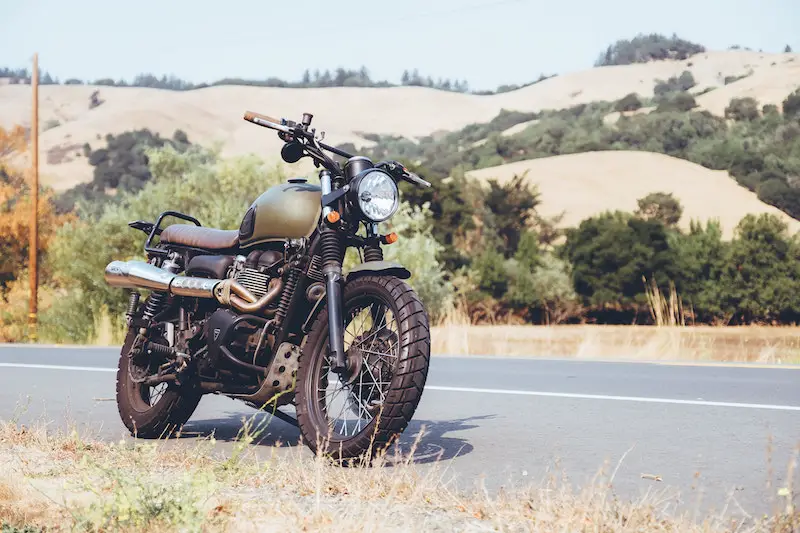
Commit to the Trip by Setting a Date
It’s all too often that people daydream about going on a motorcycle adventure. These people talk about going on a motorcycle tour but the dream never turns into reality.
Instead of saying “some day”, make the effort to commit to a road trip. Set a specific date, Book the time off work, and make the commitment.
This is the first step towards heading out on an epic adventure. It doesn’t matter if it’s three days or thirty, simply commit to a motorcycle trip and follow through with your commitment.
Without a firm commitment, you’ll keep avoiding taking the time to experience your venture. With a set date in mind, it’s easier to plan for the road trip and gives you something to look forward to.
This is one of our best motorcycle touring tips. If you’re daydreaming or skirting around the idea of a tour, set a date and commit. It’s really that easy!
Ride in the Late Spring, Summer, or Early Fall
No matter where you’re riding, it’s guaranteed you’ll run into bad weather and poor riding conditions. However, the best time of year to ride is during the late spring, throughout the summer, and into the early fall season.
In North America, and especially in the northern hemisphere, this time frame provides the best window of great weather. The temperatures will be warm enough for riding and the rainy season will be nearing its end.
During this timeframe you’ll also have the best options for tourist sites and attractions. Many places close down during the winter, late fall, and early spring. By riding during the summer season you’ll have the most options available to you when it comes to attractions, accommodation, and dining.
Some riders might prefer a late fall ride in order to catch the stunning fall colors. The problem with this approach is that you’re likely to run into freezing temperatures.
Overall, the main summer season provides the best weather for motorcycle touring. If you can get time off during this period, this is when we recommend going on your motorcycle adventure.
Decide How You’ll Ride (Your Own Bike/Rent/Motorcycle Tour)
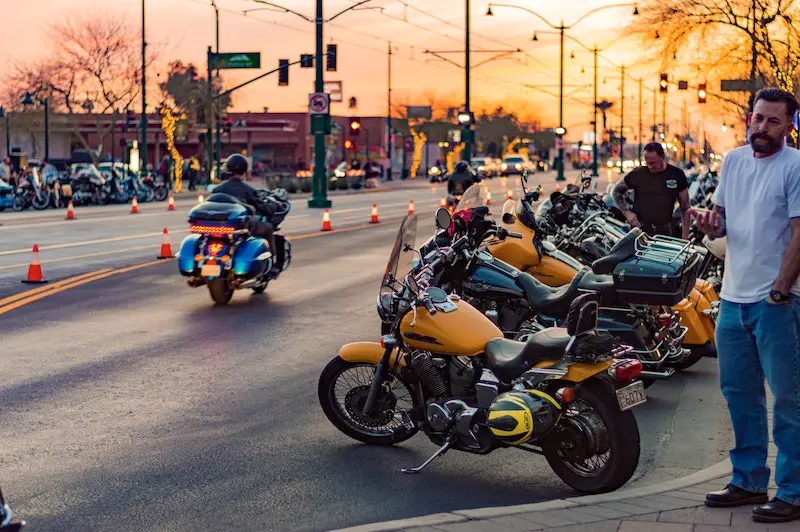
Depending on where you’re going, you have three main options for riding a motorcycle:
- Ride your own bike
- Rent or borrow a motorcycle
- Participate in a guided motorcycle tour
Most of you will be riding your own motorcycle on a local, multi-day adventure. This is the most cost-effective way of going motorcycle touring.
With just basic motorcycle touring gear, any bike can be used for a road trip. There’s no need to have an expensive touring motorcycle, whatever you have in the garage will do just fine.
Renting a motorcycle is another option if you’re traveling to a faraway destination. While not everywhere has motorcycle rentals available, many destinations have one or two rental locations.
Renting gives you the option to explore somewhere that isn’t close to home. The downside to renting a motorbike is that it’s cost prohibitive and not a budget style of travel. However, for shorter trips a motorcycle rental can be a great way to explore somewhere new.
Finally, guided motorcycle tours are the easiest, yet most expensive way of going motorcycle touring. On the plus side, a guided tour means you have to worry about travel arrangements or logistics.
These tours bring you through local areas with an experienced guide. You also get the chance to explore and hangout with other like-minded riders on the tour.
Take Lots of Photos and Videos
Everyone has a smartphone these days. There’s no reason not to be taking photos and videos on a regular basis.
Without these photos and videos it’s going to be impossible to remember everything about your motorcycle tour. While you might remember the highlights, most of the other details will be lost to time.
Photos and videos act as a digital memory and allow you to relive your venture over and over again in the future. It’s also fun to share your experience with your friends and family back home.
Capturing the best moments on your trip will make for a nice memento in the future. You’ll be able to look back and remember all of the great times you had on that specific tour.
After your motorcycle trip, consider printing out the best photos you took and framing them. This provides sentimental value and a great reminder of your experience whenever you walk by the photos.
- Related: The Best Motorcycle Helmet Cameras
Pack Lightly
If you’re motorcycle camping you’re going to need a lot more gear compared to someone that’s staying at hotels or AirBnb’s. Regardless of your travel style, aim to pack as lightly as possible.
With a credit card you can replace anything that breaks or pay for anything you need. As long as you bring the essentials, there’s no need to go overboard with your motorcycle trip packing list.
Unsurprisingly, it becomes a burden if you’re traveling with too much gear. The more you have, the more you have to worry about.
Even if you’re motorcycle camping, bringing the bare essentials is going to make it easier on you, your bike, and even your fuel economy. You’ll need even less gear if you’re staying at hotels or with friends along the way.
Clothes can be washed if you’re planning on traveling for longer than a week. While you don’t need to eat out every meal, it’s easy to buy fresh food and prepare items when you’re on the road.
It’s a good idea to bring twice as much cash and half the clothes you think you’ll need. Anything can be purchased in an emergency.
With that in mind, always be prepared for the elements you’ll be riding in, just don’t overdo it. Strive to be a minimalist and bring only the minimum essentials that you have room for.
Use Weatherproof Bags and Rain Gear

Weatherproof bags are necessary for protecting your packed gear from the rain. Unless you get lucky with the weather, there’s a good chance you’ll end up riding in the rain at some point.
The weather is impossible to protect. Even with a clear forecast, it’s possible that you can get stuck in a downpour.
Without weatherproof luggage, all of your gear and clothing is going to end up soaking wet. That’s why it’s a great idea to use waterproof or weatherproof motorcycle luggage on your tour.
If you’re using soft motorcycle saddlebags, most of them come with a waterproof cover. Alternatively, consider wrapping your gear, clothing, and other luggage using garbage bags or Ziploc bags.
It’s also a good idea to bring along a set of quality motorcycle rain gear. This is gear specifically designed to keep you dry when you get caught in the rain out on your motorcycle.
Always Wear Your Safety Gear
It’s impossible to predict a motorcycle accident. You can never be sure what’s going to happen when you’re out on the bike.
Whenever you’re riding, and especially on a motorcycle trip, it’s important to always be wearing your motorcycle safety gear. This is the gear that will protect you in case of a crash or accident.
Wearing the right protective gear can be the difference between walking away from a crash or ending up in the hospital. With so many options to choose from when it comes to gear, it’s easy to find things that are practical and comfortable.
These days they have specific motorcycle touring jackets, gloves, and boots. This gear is designed to be lightweight, comfortable, and practical for a longer rides while providing you with the protection you need.
You might be thinking it’s okay to skip on safety gear, but never skip on wearing a helmet. Even when you’re traveling in places where helmets aren’t required, you stand a better chance in all scenarios with your helmet on.
Wear Long Sleeves in the Summer
If you don’t want to take our advice about safety gear, you should at least wear long sleeves when you’re riding during the summer. This is going to protect you during an accident or crash. However, long sleeves will protect your skin from the sun and improve your riding experience.
When it’s sunny and warm during the summer, it feels nice to ride in just a T-shirt. The problem is that this isn’t a good idea and can lead to some serious issues.
Riding with just a T-shirt exposes your skin to direct contact with the sun. This is going to result in a nasty sunburn, even after just an hour of exposure.
Without any protection from the sun, you’re more likely to get dehydrated. Suffering from dehydration on your bike can compromise your ability to safely control and balance your motorcycle.
Wearing a long sleeve shirt will protect your skin from harmful UV rays and getting sunburned. It’s also going to make it less likely for you to become dehydrated or suffer from heat stroke.
Avoid Cotton shirts
Speaking of wearing long sleeve shirts, avoid using cotton materials when you’re out riding. The problem with cotton is that it traps heat close to your body and causes you to over-sweat.
Once you begin sweating in a cotton shirt it starts becoming wet, heavy, and moisture-logged. This isn’t comfortable and a soggy cotton shirt gets pretty gross.
Instead, consider wearing lightweight and moisture-wicking materials when you’re riding during warmer temperatures. These materials, such as polyester, nylon, and merino wool offer a number of different benefits for riders.
Moisture-wicking materials don’t stop heat from being released and help keep your body temperatures at an optimal level. With these materials your body stays dry and maintains its temperature balance. The clothes protect you from the elements while releasing your body heat and sweat.
Bring Your Smartphone or a Small Camera for Photos

We already mentioned taking photos and videos earlier in this post. This helpful motorcycle touring tip expands on that in a practical way.
Most of you probably already have a smartphone that is capable of taking amazing quality photos and high resolution video. For the most part, this is all you’re going to need for capturing the best parts of your trip.
With how amazing smartphones are, there’s really no need to bring a large camera or dedicated DSLR. These tend to be heavy, bulky, and end up being more trouble than they’re worth.
Instead, your phone should be able to take all of the high-quality photos and videos you could want. They also easily slip into your pocket and offer plenty of other uses when you’re on a motorcycle trip.
If you truly are into photography, consider bringing a small and portable point-and-shoot camera. Modern point-and-shoot cameras are also capable of taking amazing quality photos.
Of course, there’s no one telling you that you can’t bring along your fancy, expensive DSLR camera. Just decide whether or not the hassle of dealing with batteries, tripod, and the stress of traveling with your camera is worth it.
Book Your Accommodation in Advance
It might seem like a blast to pack your bags and head out on a trip without booking anything. I’ll let you know upfront that this is a terrible idea.
Trying to find somewhere to sleep at the end of a long day of motorcycle touring is going to be the last thing you want to do. Instead, it’s easier to book in advance and have a destination in mind.
This makes the trip planning process easier and more streamlined. It also helps you find places for the best rates and before everything gets booked up.
With websites like Booking.com and AirBnb it has never been easier to find and book accommodation. On these platforms you can look at images, read guest reviews, and compare prices to find the best rates.
Once you have set a date and decided where you want to go, book your accommodation. It’s better to get out of the way than to worry about where you’re going to stay on the road.
There’s always the possibility find free campsites last minute and take advantage of motorcycle stealth camping. This is better suited for the experienced traveler or those riding on a tight budget.
Wear Sunglasses
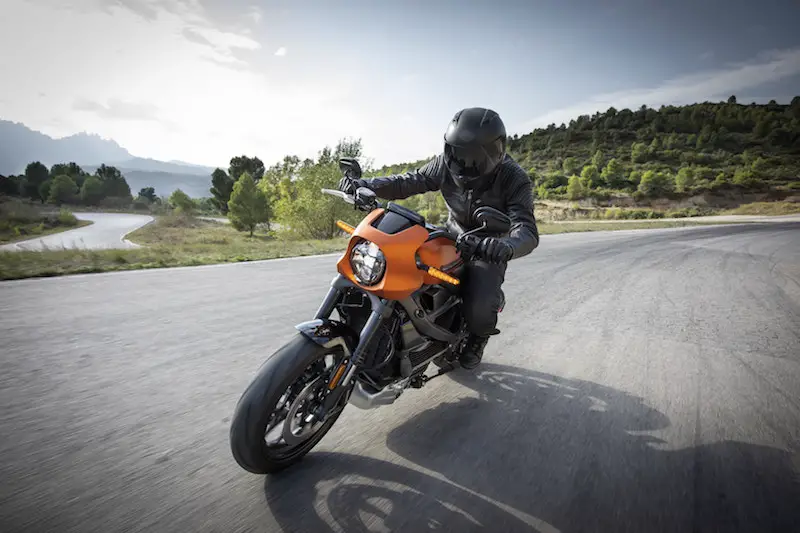
It’s essential to wear eye protection for any motorcycle ride. Sunglasses, along with a full face helmet, are the best way to protect your eyes.
Even if your helmet has a dark or tinted visor, wearing sunglasses is still a great idea. They offer a number of benefits that can improve your riding experience.
For starters, sunglasses help to keep dust, dirt, and road debris out of your eyes. They make it possible to ride with your visor open while keeping your eyes safe and protected.
Sunglasses also protect your eyes from harmful UV rays. Prolonged exposure to the sun can damage your eyes and lead to headaches.
Bring a pair of sunglasses that are comfortable to wear with your helmet. Try them on beforehand to make sure you’re comfortable with wearing them.
Roll Up Your Packed Clothes
Rolling up your clothes is the most efficient way of packing them. When they’re rolled up there are less folds, that would otherwise take up precious storage space.
Another benefit to rolling your clothes is that it reduces wrinkles, since there aren’t any folds. It’s also easier to keep everything organized when it’s rolled up and easily accessible.
This applies to any of your packed clothing, including underwear and jeans. Another helpful tip, lay your socks out instead of rolling them into one another. This can help you save even more space!
Layer the Clothing You’re Wearing
Layering is a great way to save space and adjust to temperature changes. This is the key to surviving any of the weather conditions you expect on your motorcycle trip.
For most trips, you really don’t need to pack that much clothing. One or two sweaters and some practical base layers is all you’ll need.
With layering, you can easily add or remove items of clothing depending on the weather conditions. This way, you’ll always be prepared for whatever the weather decides to throw at you.
Use Google Maps
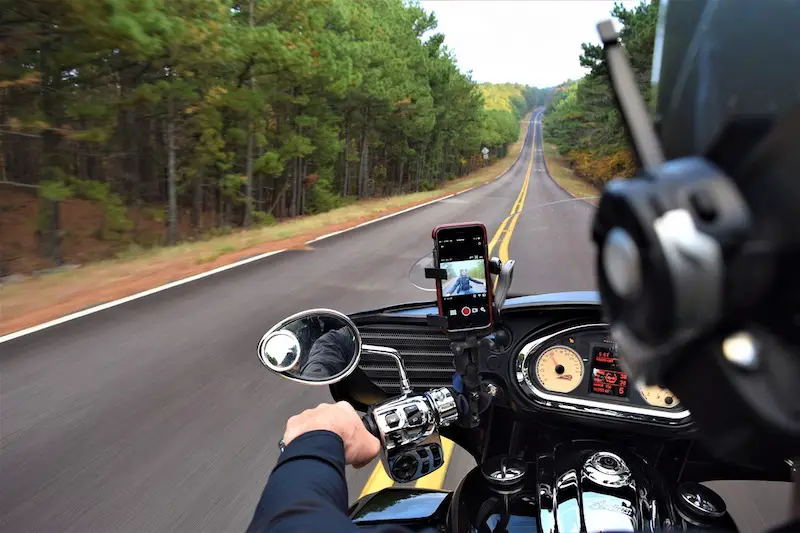
The best motorcycle smartphone app when it comes to touring is Google Maps. Most of you are probably familiar with this app and are already using it on a daily basis.
Google Maps makes it easy to plan your route and find interesting scenic roads along the way. It also gives you updates on traffic, estimated drive time, and can be used to find tourist sites or other specific destinations.
Printed maps are outdated and a hassle to use. While some of you might prefer them, Google Maps is a superior navigation app and the best way to plan your routes.
Another great feature of Google Maps is the ability to easily find local attractions, fuel stops, points of interest, and historical sites. From the app you can read reviews, find out opening hours, and learn more about whatever you’re looking for.
Even if you’re using Google Maps, don’t forget to stop at tourist or visitor centers along your route. You can find interesting local maps at these places. The people working will also be able to help you with local tips and other off-the-beaten-path places for you to check out.
Have a Kit With a Few Small Essentials
It’s a good idea to have a kit with a few small essentials that’s easily accessible. This can be stored in your motorcycle tank bag or at the top of your luggage for quick access.
There are a number of essential items you’ll want to keep in this kit. These items include things like bungee cords, a multi tool, small first aid kit, USB charger, duct tape, and a kickstand puck.
Having these items easily accessible means you’ll be able to quickly find them when you need them. The last thing you want to do is have to unpack everything just to find your USB charger at the bottom of your luggage.
Make Sure Your Bike is Road Ready
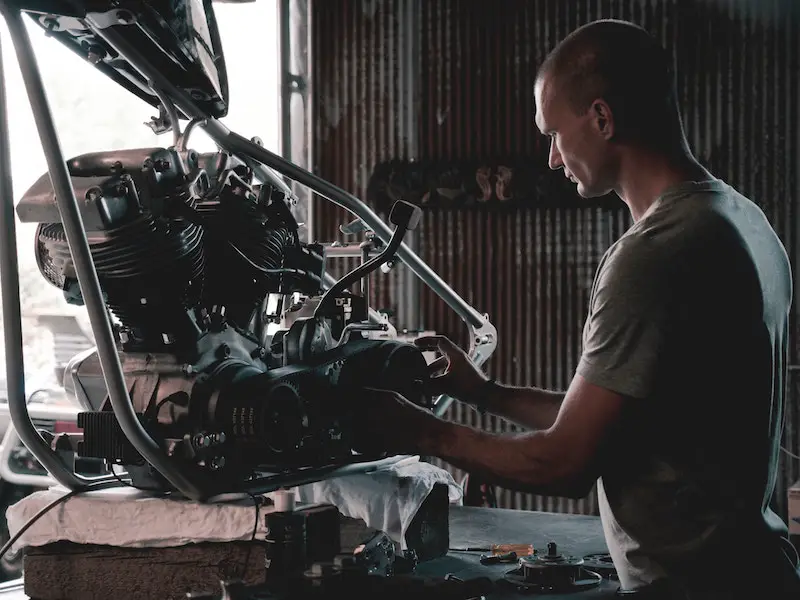
Unless you’re renting a bike, it’s important that your own motorcycle is road ready. Always check the mechanical condition of your bike before heading out on a long trip.
Not only should you be performing basic motorcycle maintenance, it’s a good idea to go into a deep dive that covers all of your motorcycle components. Everything needs to be operating in great condition since you won’t want to deal with any major mechanical issues out on the road.
For starters, check the tire tread, condition, tire pressure, signals, brakes, and lights. Always start your trip with a fresh oil change and perform any fluid or filter changes that are coming up on scheduled maintenance.
Speaking of scheduled maintenance, check whether you have any tune ups or valve adjustment that need to be done. Get these done before leaving on your trip.
It might also be worth it to start out with new tires, especially if you’re going on a longer tour. The bike will handle better with a set of new tires and give you more confidence in your ride.
Finally, consider joining an auto club for peace of mind. These include services such as AAA, CAA, Geico, and even your bank or credit card provider might offer roadside assistance.
Auto clubs are worth the annual fee, especially if you need any roadside assistance or towing. Do some quick research and price compare beforehand to find the right auto club for your needs.
Buy a Motorcycle Seat Cushion
Motorcycle seat cushions can make a world of difference for longer rides. For day trips, it’s not a big deal, but for multi-day adventures having a seat cushion can be beneficial to your experience.
Seat cushions help with ergonomics and reduce pressure points on your legs. This results in a more comfortable, enjoyable ride that lets you gobble up those miles without any pain or suffering.
Depending on your bike, there are a number of different motorcycle seat cushions available to choose from. Check out our post on the best motorcycle seat cushion for some inspiration and to see our top recommendations.
Don’t Forget Earplugs
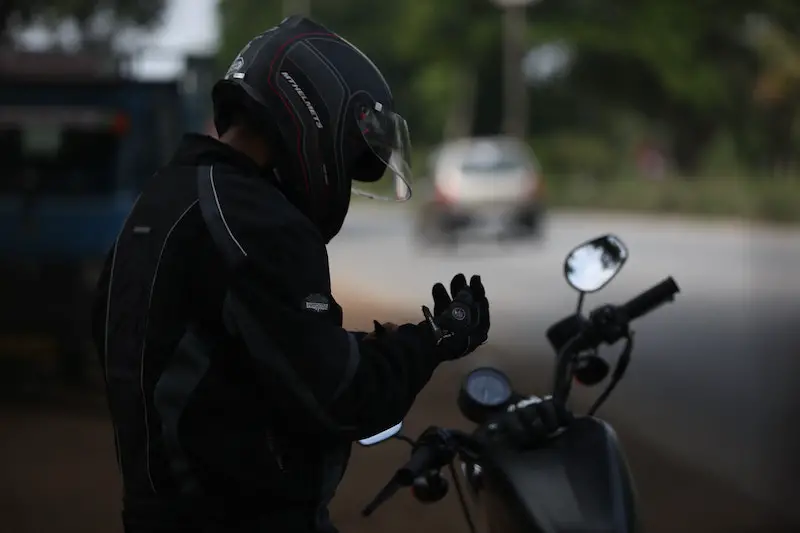
Even if you’re riding with a quality, noise-cancelling helmet, it’s important to bring earplugs as well. The ongoing wind noise can damage your hearing, especially when you’re spending all day on the bike.
There are studies that show your hearing is especially susceptible to damage at highway speeds on the motorcycle. To avoid getting tinnitus or dealing with permanent damage, ear plugs are an obvious choice.
Believe it or not, earplugs can actually enhance your riding experience. You’ll be able to hear your motorcycle better and, if you’re using a motorcycle headset, they make it easier to hear your music.
We put together a helpful post on the best motorcycle earplugs. Feel free to check it out for some inspiration as well as for our top recommendations.
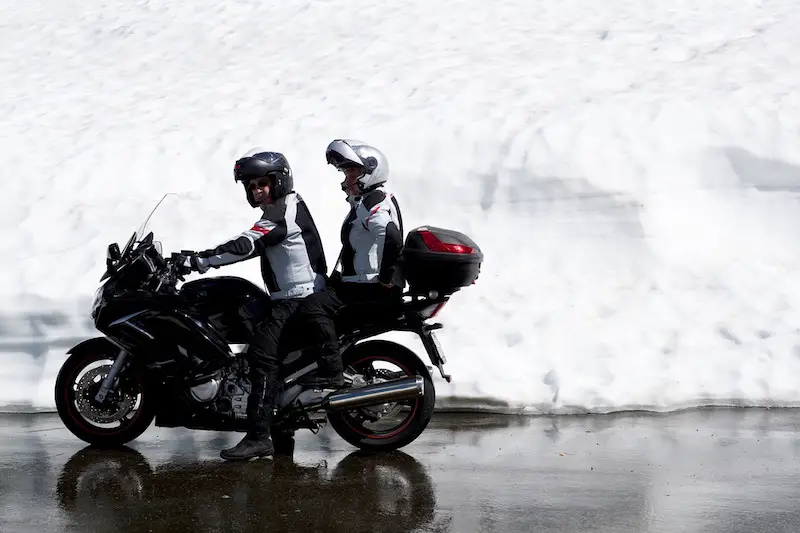
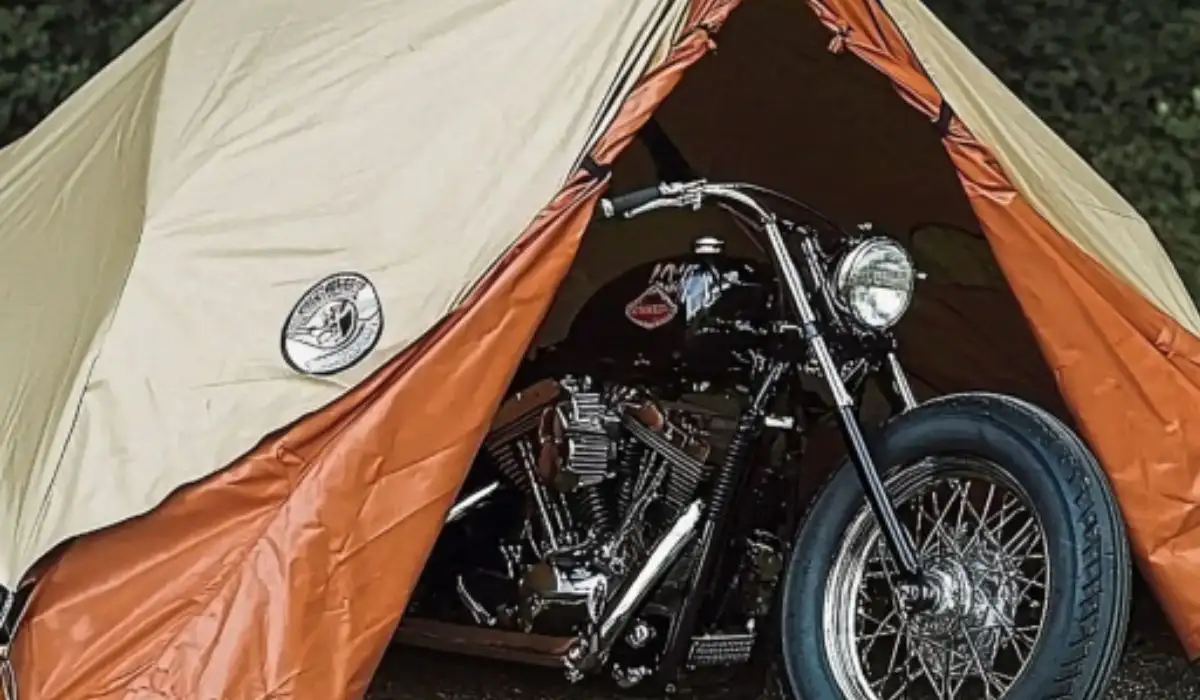
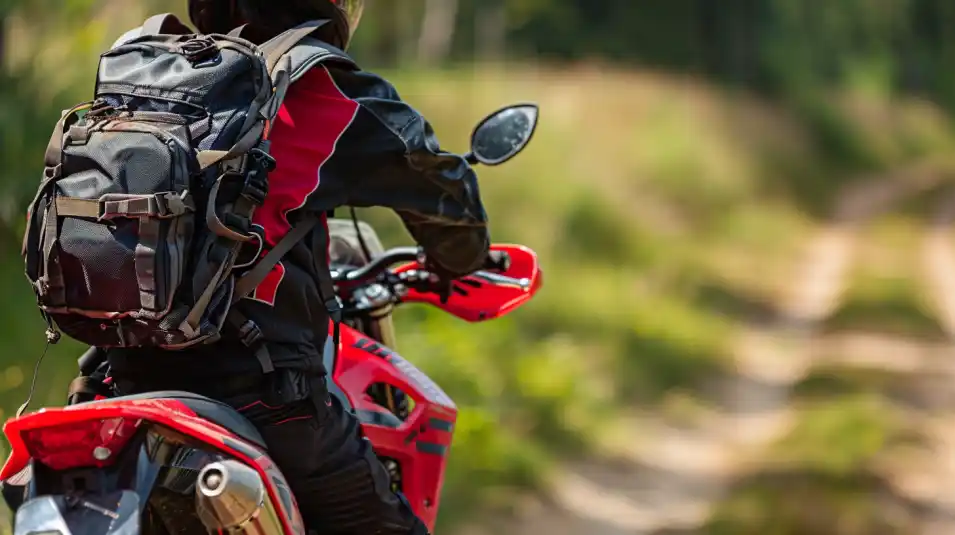
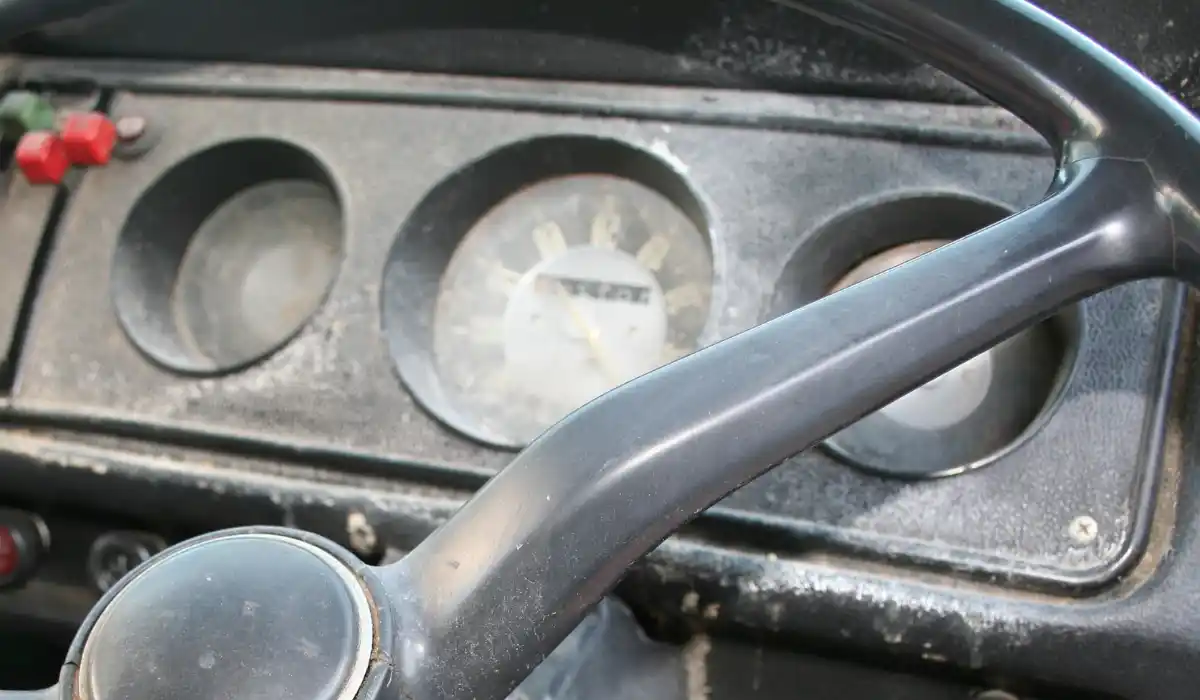
Leave a Reply